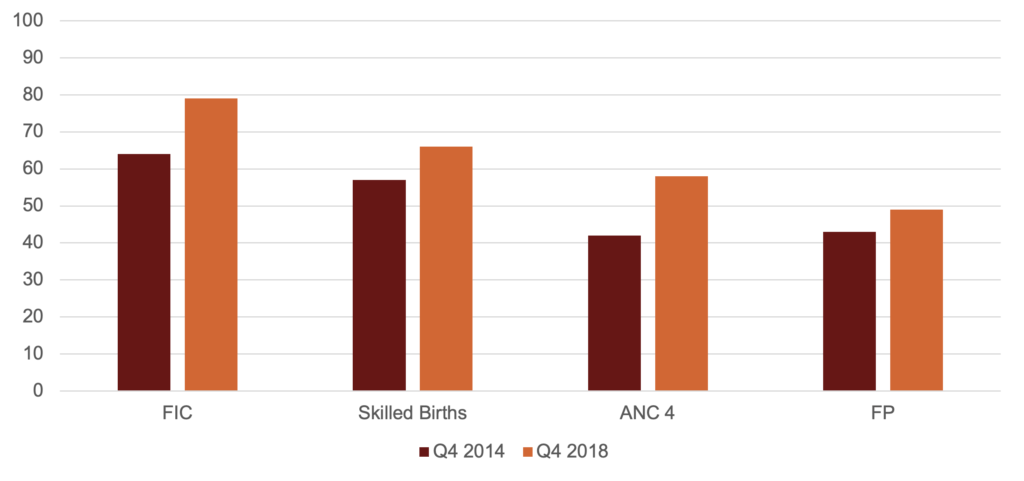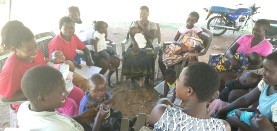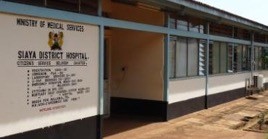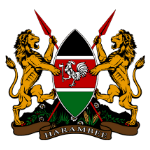Introduction
Siaya County is located along the shores of Lake Victoria in western Kenya. It is a county with challenging health issues and complex health determinants – high levels of malaria; dense and rapidly growing population levels; and historically-high rates of maternal, neonatal and infant mortality. In 2016, the County introduced the use of the Reproductive, Maternal, Newborn, Child and Adolescent (RMNCAH) Scorecard as a management and accountability tool. In 2018, the tool was decentralized to all wards, health facilities (HFs) and communities. From top to bottom, in Siaya County this heightened commitment to, and leadership towards, positive RMNCAH outcomes has been dubbed the ‘Red Revolution’ as the counties moves to eliminate the red color in their respective RMNCAH Scorecards and improve service delivery.
Background
In January 2016, Siaya County introduced the use of the digital RMNCAH Scorecard as a management and accountability tool with senior county health officers trained in how to access, populate and use the Scorecard. Following the successful use of the scorecard tool at the county level, in 2018 priority was given to decentralizing the use of the Scorecard further to the ward, HF and community levels. The process began with training 30 Sub-County Health Management Team (SCHMT) members and 147 Community Health Extension Workers (CHEWs) with support from UNICEF. Five County Health Management Team (CHMT) members were also retrained as Scorecard coaches.
How it works
Every quarter, the Scorecard is discussed and analyzed as a standing agenda item at the County Health Sector Performance Review Meetings with participation from sub-county health officers and implementing partners. The CHMT also reviews the Scorecard subsequently on a monthly basis to trigger targeted mentoring between CHMT members and Sub-County or HF teams requiring support to implement agreed RMNCAH actions. Facility-In-Charges are invited to quarterly Sub-County RMNCAH Data Review Meetings financially-supported by the World Bank in which Scorecard review is a standing agenda item. Facility-specific Scorecards are also reviewed monthly by Health Facility Management Teams (HFMTs).
Institutionalisation of the scorecard
Since the initial County rollout in 2016, use of the scorecard management tool has been fully institutionalized into all of the County’s routine review meetings and led to establishment of an M&E Technical Working Group (TWG) and more regular ward-level Social Accountability Forums in which the Scorecard is also utilized.
Performance incentives
In Siaya County, the RMNCAH Scorecard has a bearing on the performance contract for the County Health Department, with trophies provided to best performing staff and performance targets given to Community Health Volunteers (CHVs) based on low performing Scorecard indicators. County provision of Mama Baby Packs and awards for most improved Health Facilities has also triggered healthy competition between facilities to increase service coverage, particularly related to skilled birth-assisted (SBA) deliveries. Regular joint discussion of the scorecard data and assignment of actions within the health system has improved collaboration at all levels and has led to higher productivity of MOH staff at all levels.
Active engagement of local political, religious and social leaders has been critical to progress
Siaya County is utilizing the maps and graphs functionality on the web platform to create effective data visualization advocacy tools that are used with partners and local leaders.
Impact
Resource mobilization
During the first year of the Scorecard’s use, the Siaya County Executive Committee (CEC) budgeted for the construction of 15 new maternity units. In 2017, the County earmarked KSH 11 million (~$110,000) more for the construction of 3 additional maternity units and set aside KSH 1 million (~10,000) specifically for family planning (FP) commodity support. The following year, based on continued RMNCAH Scorecard analysis, key partners jointly mobilized resources in the amount of KSH 1.5 million (~$15,000) to hold the first county adolescent conference to discuss access to sexual reproductive health. Overall, the the county health budget has increased annually since 2017 at an average of 30% per year.
Human resources
The Scorecard has also informed focused measures to address lack of qualified RMNCAH health personnel including hiring more nurses on contract using Linda Mama funds, training nurses on the RMNCAH Scorecard, assigning all RMNCAH SC-trained CHMT members to mentor specific HWs in low-performing primary HFs, recognizing RMNCAH Scorecard Champions, establishing a Siaya Professionals Forum, and undertaking more targeted and action-oriented support supervisions at the facility and community levels as informed by the Scorecard and related Action Plans
Data quality
In Q1 2016, HMIS reporting rates were at 96% for completeness and 86% for timeliness. Using disaggregated Scorecard data, the county was able to determine which select HFs required program-specific audits and targeted support supervision. The county prioritized the use of World Bank funds in the amount of KSH 300,000 (~$3,000) to carry out data quality audits. The CHMT credits this exercise for the improvement of RMNCAH-related reporting with 100% completeness and 99% timeliness documented in the Scorecard as of Q3 2020.
Over 16% improvement in ANC4 coverage
Scorecard review showed low ANC uptake and high rates of teenage pregnancy which led to investment in youth-friendly services and the establishment of a taskforce
Over 15% in full immunization coverage (FIC)
with the scorecard being used to track key performance indicators and plan to extend its use to track each health facilities with KEPI fridges
11 million KSH set aside by the county for the construction of 15 new maternity units
after the scorecard review showed low skilled birth attendants

Service delivery improvements
Maternity care
Increased 24-hour skilled maternity care in rural health centres following review of the Scorecard highlighting low SBA coverage in certain underserved wards: This was accomplished by the County renovating and constructing 18 new maternity units and 21 medical staff houses at health centres and dispensaries. The County also newly requires all ‘Facility-in-Charges’ to live in HF staff housing so that SBA availability is 24/7. In 2017 alone, the County earmarked KSH 30 million (~$300,000) for construction, and KSH12 million (~$120,000) for renovation, of staff houses. Members of the County Assembly (MCAs) are also using Ward Development Funds to support the construction of maternity units within their respective constituencies which indicates political commitment from Scorecard use. Relatedly, skilled delivery improved from 55% in Q4 2017 to 69% in Q2 2019.
In addition, consolidated programming to increase demand for skilled deliveries occurred after initial 2016 County Scorecard indicators clearly showed the extent of the challenges facing the County: One of the most significant service approach changes that emerged was to offer a set of complementary and non-duplicative incentives provided through different government and partner-supported efforts. Mama Baby Packs and birth cushions are provided by the County for women having SBA deliveries and cash incentives are provided by the Linda Mama Programme to both mothers and HFs per SBA delivery. Separate cash incentives of KSH 400 (~$4.00) for CHVs/TBAs who accompany a mother to a Level 2 Health Facility at night and for a HW who assists in delivering a baby at a lower-level facility at night are also provided by the World Bank Transforming Health Systems for Universal Health Care (THS-UHC) project.
Adolescent health
Prioritized services for pregnant teens following Scorecard-related bottleneck analysis (BNA) on persistently low ANC rates. A correlation was found between wards with low ANC and high teenage pregnancy. This triggered establishment of a Teenage Pregnancy Task Force chaired by the County Commissioner and setting up of a Teen Moms Club by a Member of the County Assembly (MCA). Since July 2017, free pregnancy testing is also done at the community level in Siaya County to improve accessibility and affordability of client- and youth-friendly services with ANC 4 rates improving by 35% between 2016 and 2018, from 43% to 58% respectively.

Community health
Improved community health services with the aim of increased household uptake of available essential services and high impact interventions presented on the Scorecard: In FY 2017/2018, the County set aside KSH 5 million (~$50,000) to pay stipends to the 2,148 CHVs in the county, all selected by their communities. This increased to KSH 6.5 million (~$65,000) the following fiscal year. In addition, the stipend was initially KSH 2000 (~$20) per month and increased in 2018 to KSH 3000 (~$30) per month, with the County also paying the National Hospital Insurance Fund (NHIF) cover for CHVs which includes up to five dependents in their families. CHVs are also being provided with training on the three leading preventable causes of maternal and child mortality in the county (malaria, diarrhoea and pneumonia) and how to carry out Rapid Diagnosed Tests (RDTs) for malaria. Newly revised Mother Baby Booklets also provide space for CHVs to record follow-up actions which is leading to improved CHV performance and more focused support from their supervisors. Following review of the RMNCAH Scorecard at the ward-level Social Accountability Forum, one MCA used Ward Development Funds to purchase over 150 CHV Kits so all CHVs in Central Alego Ward had the full set of supplies needed to do their community-level work. Results improved significantly thereafter with SBA at 21%, ANC4 at 37% and LLINs to pregnant women at 68% in Q4 2018 while in Q3 2019 the figures were 40%, 61% and 82% respectively.
Success story: Political commitment
Political commitment for expanded and higher quality RMNCAH services in Siaya County has made great strides since implementation of the RMNCAH Scorecard. Local politicians and leaders have become the top advocates for improved services, infrastructure, policies, budgets and partner support. The Governor, his spouse – the County’s First Lady, the CEC (often referred to as the County Cabinet), area Members of Parliament (MPs), Members of County Assemblies (MCAs) – as well as high-profile religious leaders – are all familiar with the Scorecard tool. They have either:
- used the Scorecard to advocate for greater RMNCAH resources and updated policies
- have been approached by other civil society advocates and international partners who use the Scorecard as one of their key evidence-based materials for policymakers.
The Scorecard was used to spur greater action under the 2015 ‘WADAGI’ Initiative (Zero Tolerance to Preventable Deaths). Soon after, the County Assembly fast-tracked passage of the County Health Services Act resulting in significant increases in the county health budget for infrastructure, staff and operationalization of existing but underutilized infrastructure. The County Executives are now working on a new bill for additional funds to sustain the county’s 187 Community Health Units.
County and local leaders are also working closely with communities to increase demand for services and overcome deeply entrenched cultural and equity barriers. Scorecard data is regularly disaggregated by ward; displayed in user-friendly visual maps and graphs generated by the Scorecard web platform (which integrates GIS data with health data); and discussed during community-based meetings (Community Dialogue Days, Social Accountability Forums). This has led to a number of MCAs better appreciating the magnitude of the health problems in their wards and using Ward Development Funds to implement actions requested by the communities.
Future plans
For the implementation of the Scorecard and further decentralization, Siaya officials have planned the following activities:
- Intensify use of Action Tracker available on the RMNCAH Scorecard web platform, update it monthly and activate the alert function so ‘Action Owners’ are duly reminded by mobile SMS and email to take timely action
- Use the Scorecard to track key County priorities such as full immunization coverage (FIC) by ensuring HFs with KEPI fridges immunize daily, equipping 17 additional immunizing sites with KEPI fridges, and conducting regular monthly outreaches

Scorecard milestones
- 2016: RMNCAH Scorecard introduced
- 2018: Scorecard used at all MOH Levels in County
- 2018: RMNCAH Investment Framework developed as Investment Case
- 2019: RMNCAH Bill initiated by MCA for Assembly Approval
- 2017 to 2019: County Health Budget increases annually
